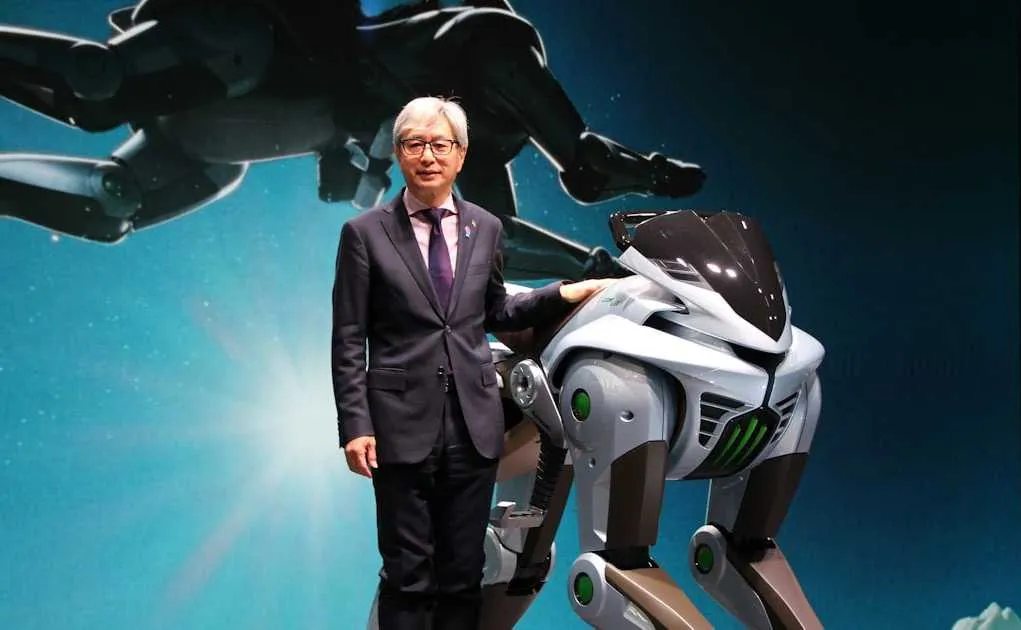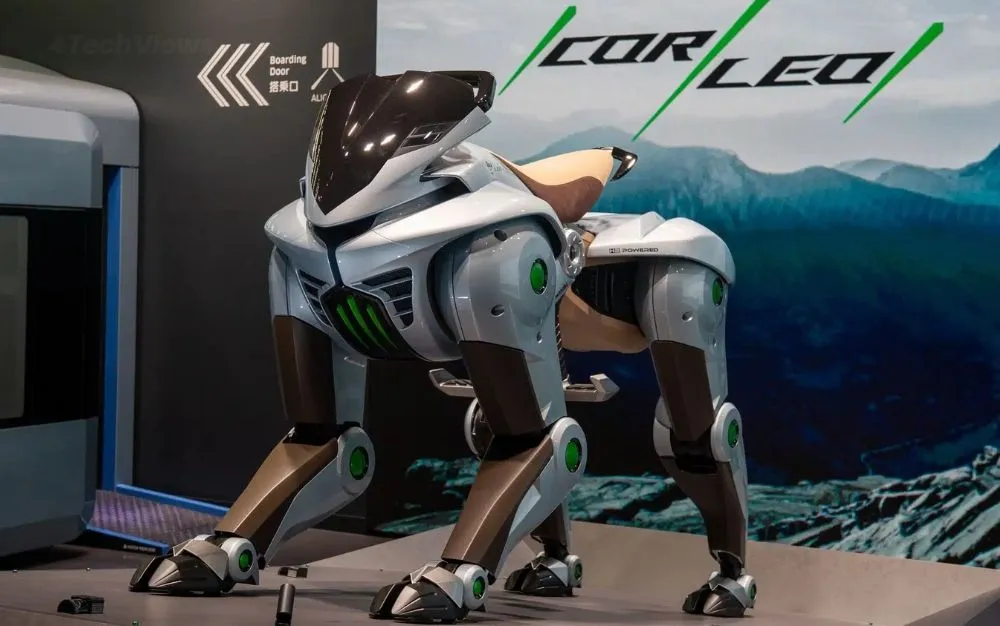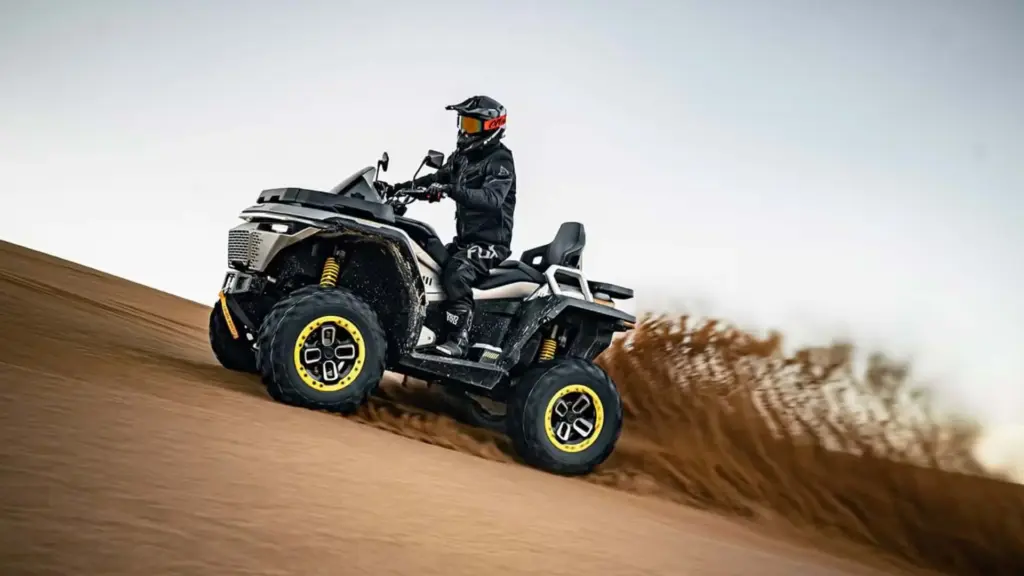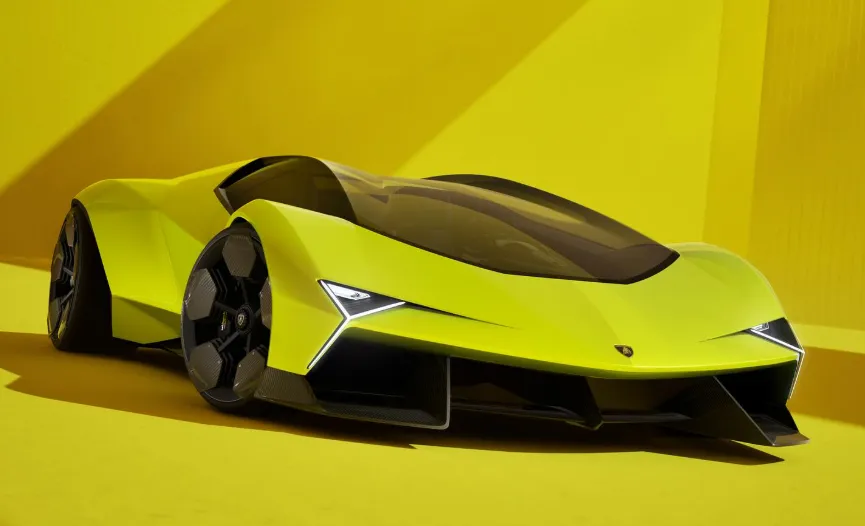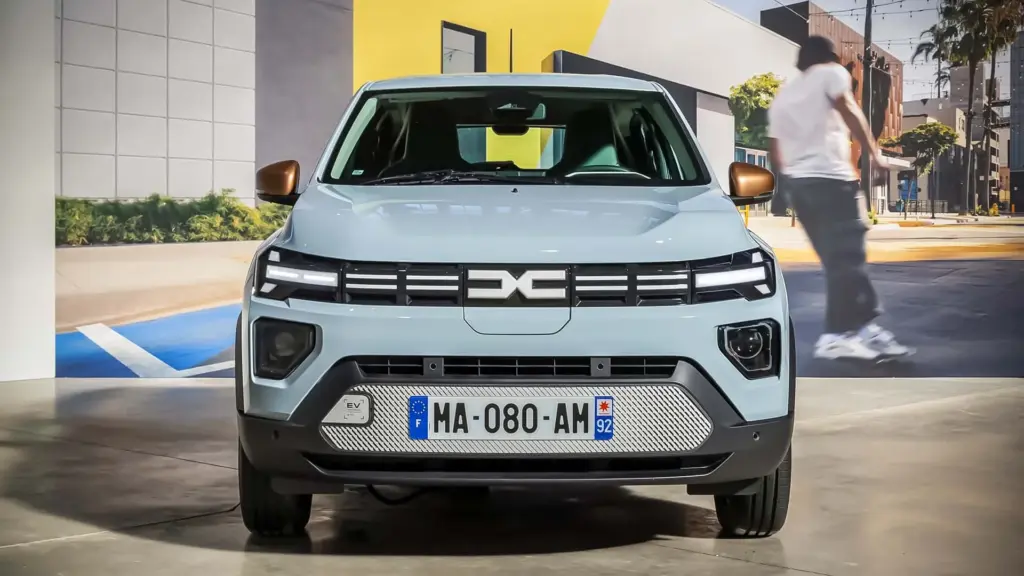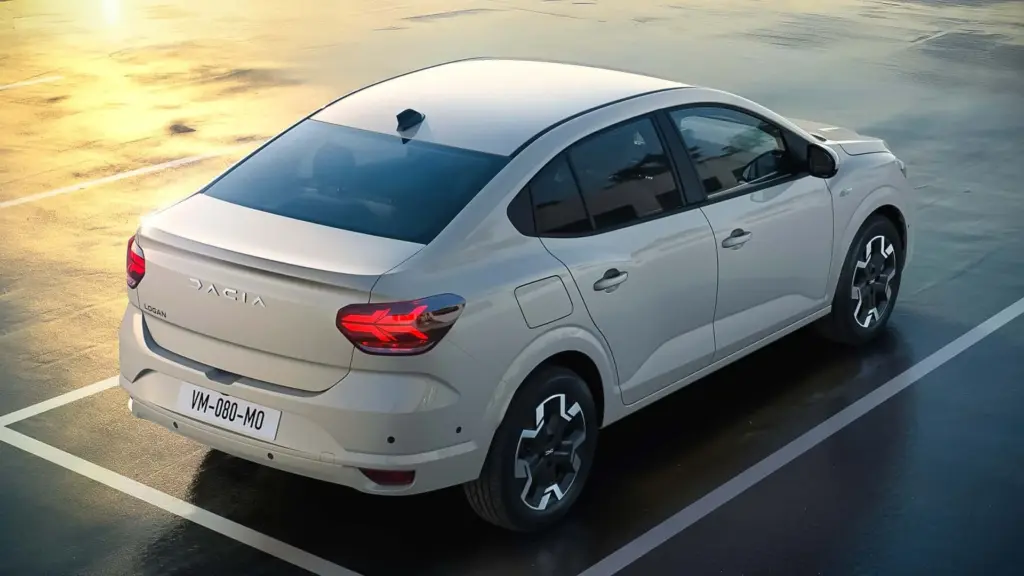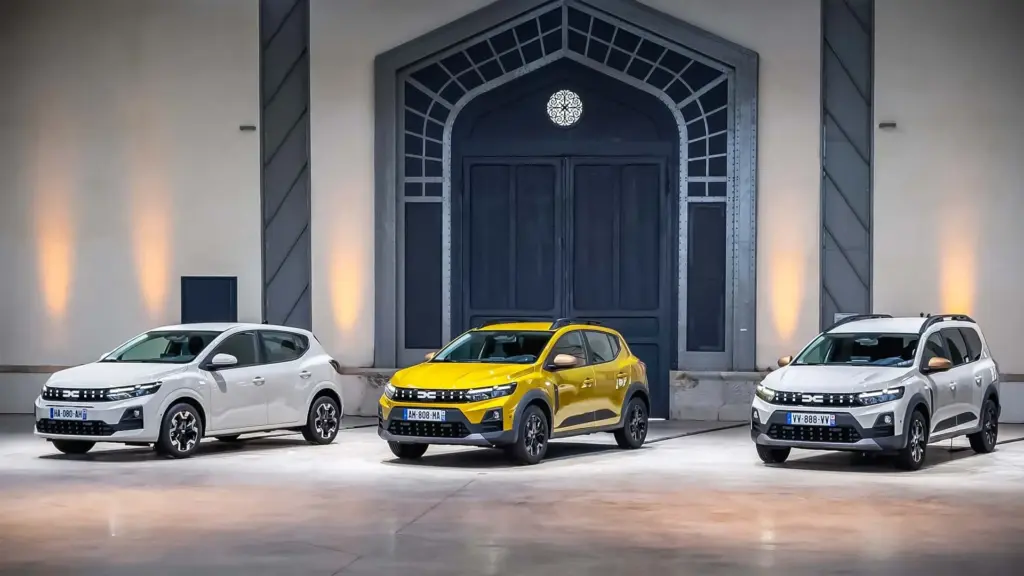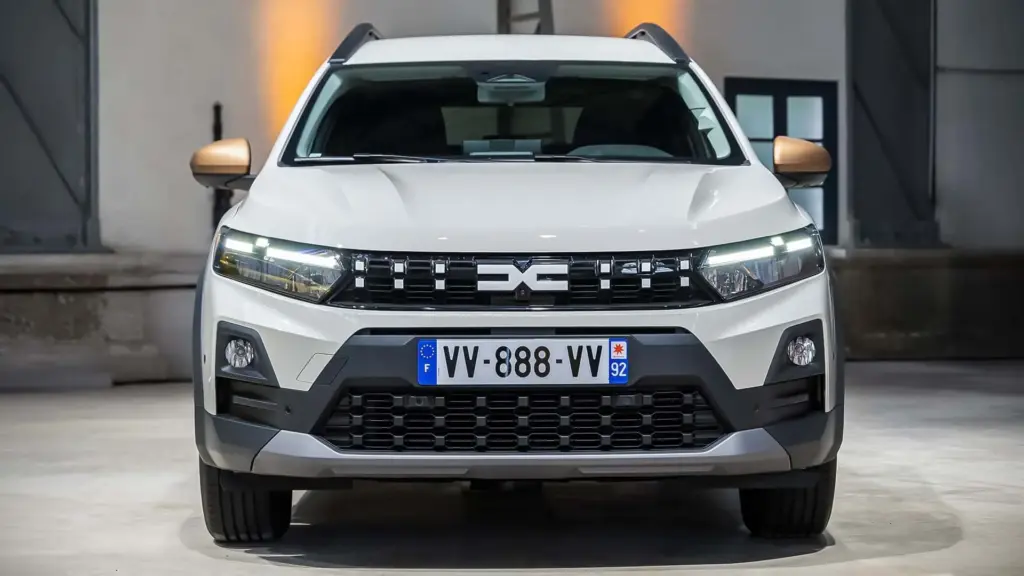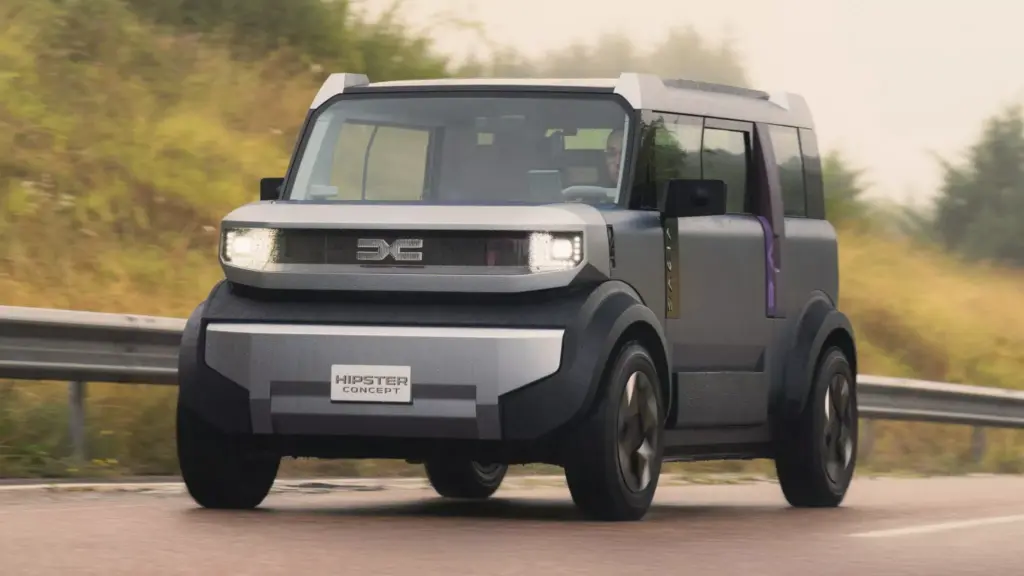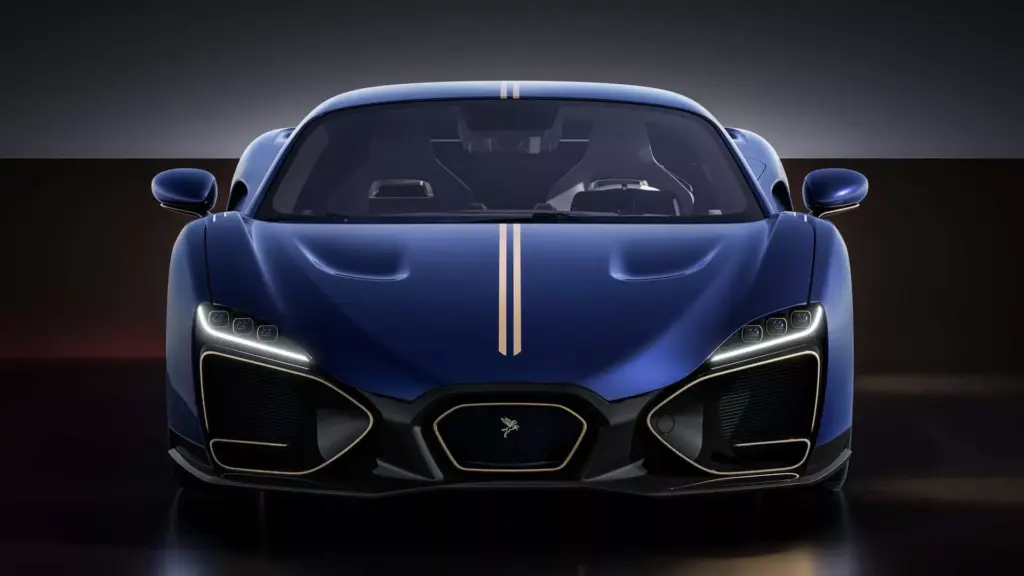Hold onto your futuristic cowboy hats! Kawasaki, renowned for its high-performance motorcycles, has taken a bold step into the future with the introduction of the Corleo. Essentially, it’s a “robot horse” with four legs that promises to tackle any terrain—and it even runs on hydrogen. Sounds like something out of a movie, right? Let’s find out if this machine is pure genius or just a wild concept.
What on Earth is This Kawasaki Corleo?
Advertised as a “revolutionary off-road personal mobility vehicle,” the Corleo completely departs from Kawasaki’s traditional offerings. Forget motorcycles, ATVs, or jet skis. We’re talking about a robotic quadruped, part horse, part motorcycle, that looks straight out of a cyberpunk anime. The idea is to blend the agility of an animal with the engineering of motorcycles, creating something entirely new.
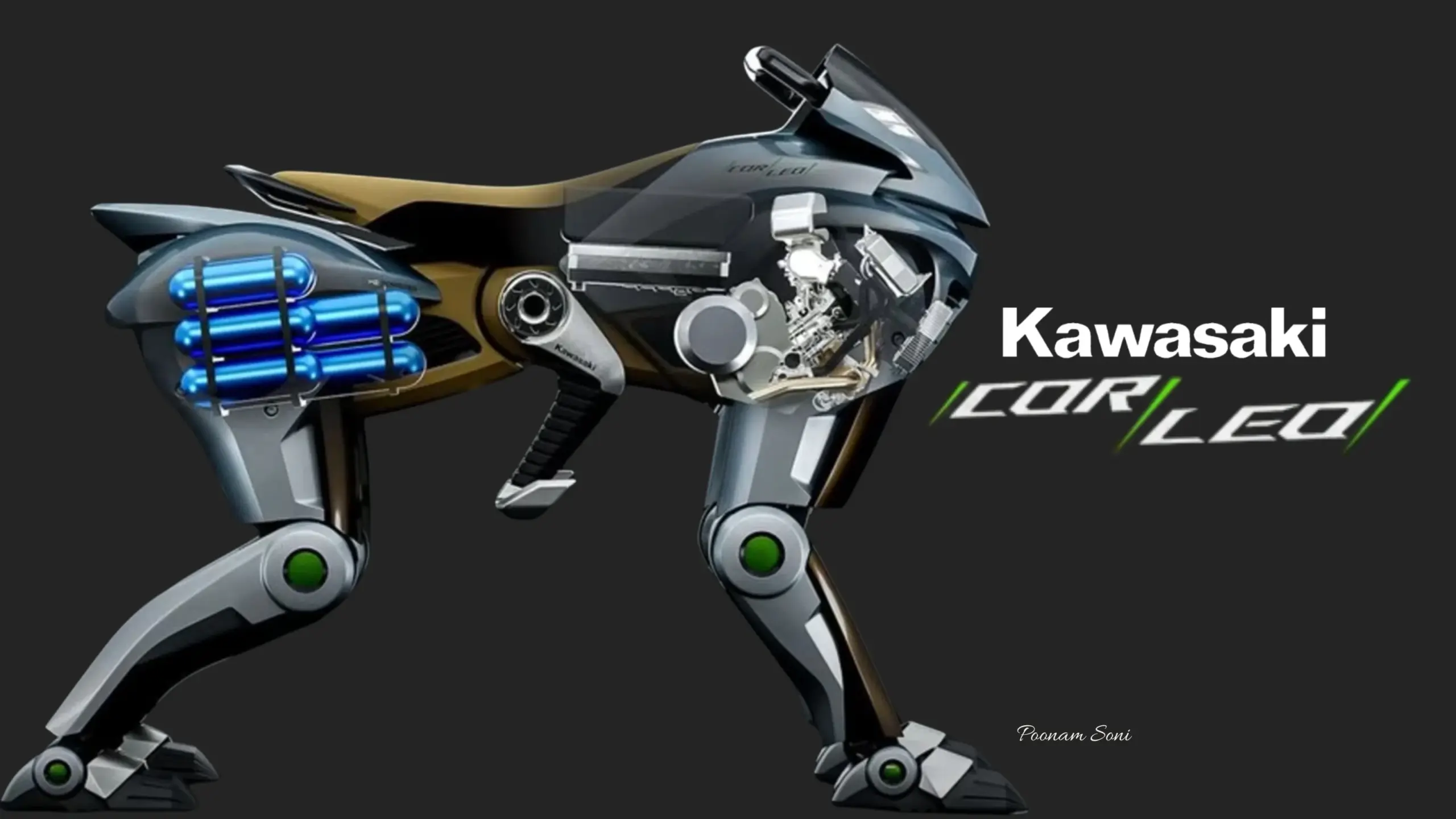
Unveiled as a glimpse into 2050 (yes, you read that right, 2050!), the Corleo was showcased at the Osaka Expo 2025. The promise? To take you to places where even your toughest trail bike wouldn’t dare go. Could we finally play Zorro in rocky mountains without needing a real horse (or stunt doubles)? The animal inspiration is clear, aiming for the efficiency and adaptability that only nature (and perhaps Kawasaki) can provide.
How Does the Corleo “Gallop”? The Engine and Robotic Legs
Here’s where things get interesting—and a bit… confusing. The Corleo features a hydrogen “150cc” engine. Wait, 150cc? That seems a bit small even for a scooter! The twist: this engine doesn’t directly power the legs. Instead, it acts as a generator, converting hydrogen (stored in a cartridge at the rear) into electricity. That energy powers electric motors in each of the four legs.
Speaking of the legs, they’re the stars of the show. Equipped with non-slip rubber “hooves” and split tips (how fancy!), they promise traction on any surface: rock, grass, gravel, perhaps even your living room carpet (don’t try that at home… yet). They absorb shocks, adapt to terrain, and have independent rear suspension to ensure stability. It’s like having four super-intelligent shock absorbers instead of wheels.
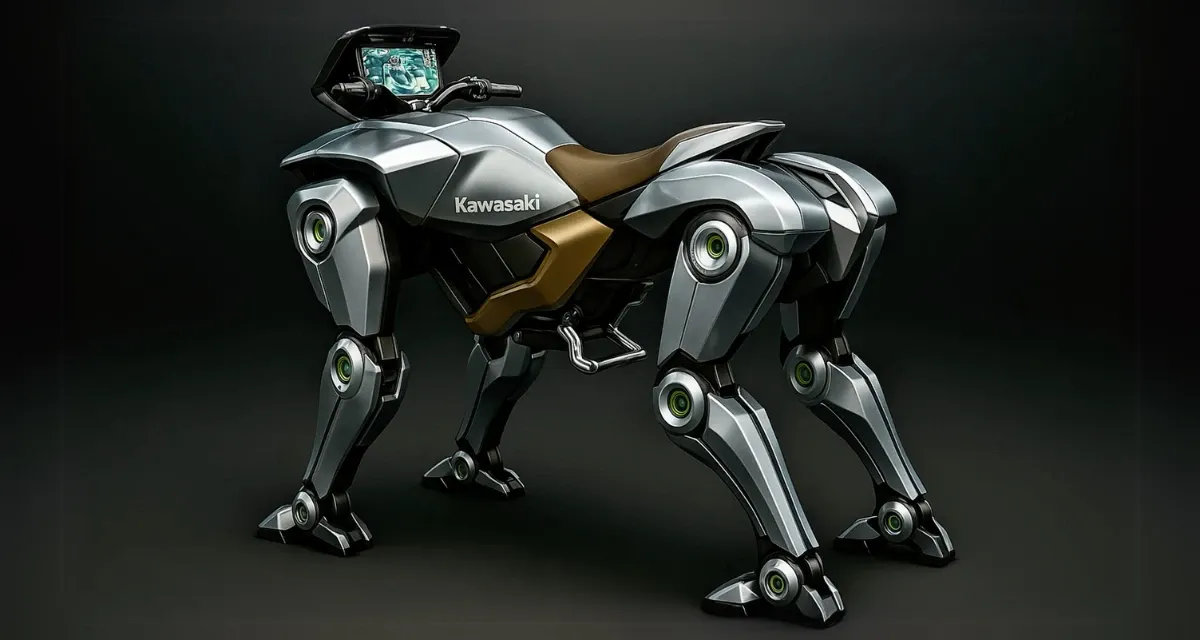
Highlights of Robotic Mobility
- Articulated mechanical legs
- Traction-focused rubber hooves
- Integrated shock absorption
- Active ground adaptation
- Independent rear suspension
- Animal-inspired movement
Do You Need to Be a Jedi to Operate This Thing?
If you’re imagining an airplane cockpit filled with buttons, you can relax (or not). Kawasaki claims the control is “intuitive,” inspired by horseback riding. You guide the Corleo by leaning your body and using your weight on the footrests (futuristic stirrups?). Sensors in the handlebars assist, but the idea is for rider and machine to become one. Sounds poetic, but will we actually look goofy trying to balance?
To help the less skilled (i.e., all of us), the Corleo is equipped with Artificial Intelligence. An electronic brain analyzes the terrain in real time and adjusts the legs to maintain stability, even on steep slopes. Kawasaki assures us that even those who have never gone off-road will feel at home. Will that be the case? Without a conventional handlebar, the experience promises to be completely new. Whether “new” means “amazing” or “I’ll faceplant on the first bump” remains to be seen.
How Control Works
- Based on weight shifting
- Sensors in the footrests and handlebars
- AI for active stabilization
- Natural human-machine interface
- No common steering controls
Striking Design and (Theoretical) Functions of the Corleo
Visually, the Corleo is an intriguing mix—its body resembles a sport bike but is mounted on four robotic legs. The main body serves as a seat for the rider while the legs handle the tough stuff. Kawasaki assures that it can tackle mountains, rivers (will it float?), and extreme routes where regular motorcycles wouldn’t even think of going.
An interesting feature is its modular design. This means that, in theory, the Corleo could be adapted for tasks beyond just taking people for rides. Imagine a Corleo firefighter in hard-to-reach areas, or a Corleo explorer on Mars (okay, maybe that’s pushing it). The possibilities are vast, but for now, they remain just… possibilities. We haven’t seen a real Corleo doing any of that, only some really cool animations.
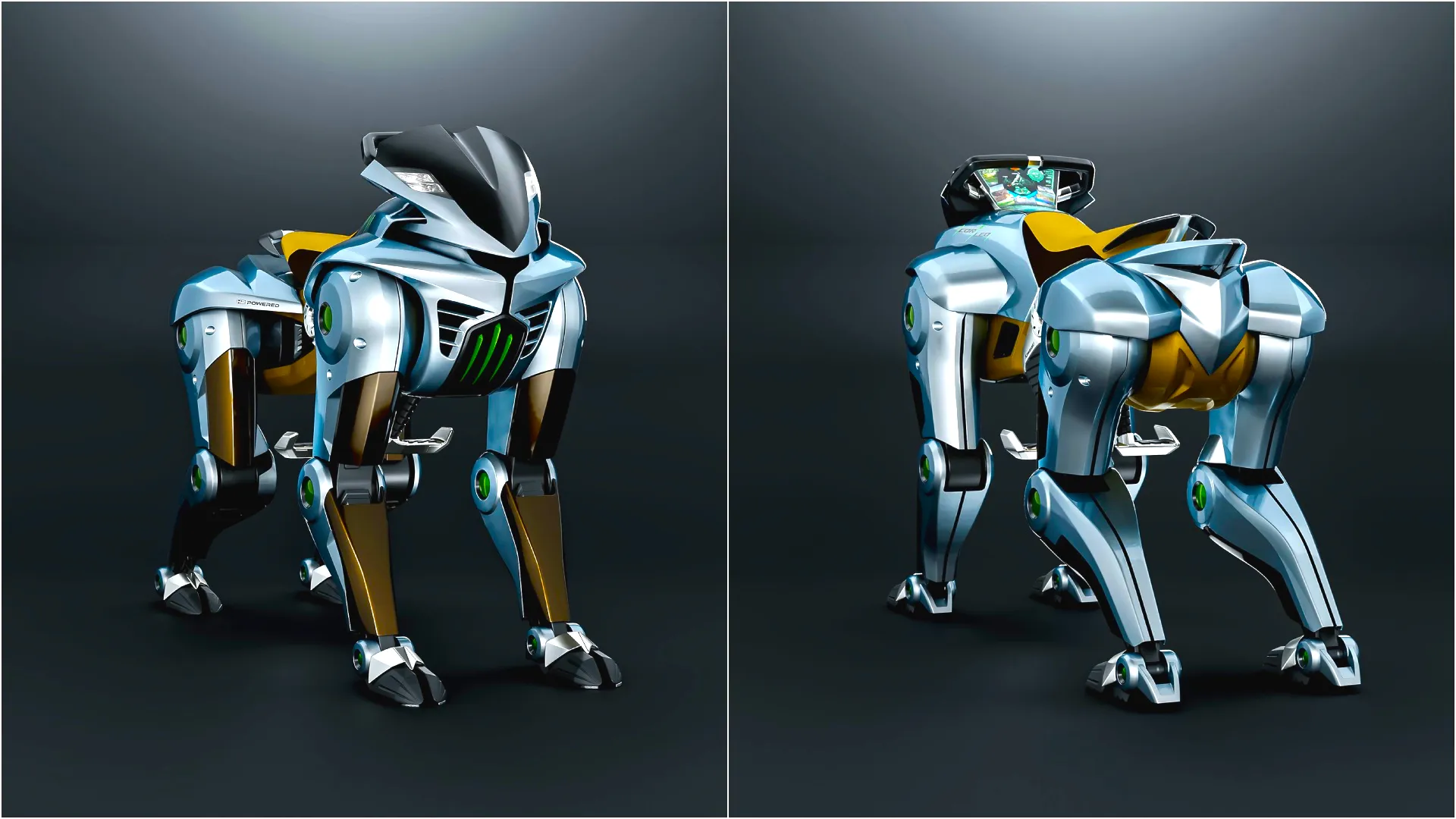
Potential Uses for the Robot Horse
- Extreme personal transportation
- Challenging search and rescue
- Remote scientific exploration
- Delivery of isolated supplies
- Future modular applications
Hydrogen: Clean Energy of the Future or Extra Complication?
The choice of hydrogen as fuel is a key point. In theory, it’s fantastic: the Corleo emits only water vapor, making it eco-friendly. Goodbye, black smoke! Kawasaki bets on this as part of its vision for sustainable transportation in the upcoming decades. The idea of a hydrogen “tank” in cartridge form also seems practical.
But let’s not get ahead of ourselves. Where will the hydrogen come from? The production of “green” hydrogen (made with renewable energy) is still costly and limited. And what about infrastructure? Where are you going to “fill up” your robot horse? Additionally, the efficiency of converting hydrogen into electricity to power the electric motors may not be as high as using batteries directly. It’s a bold move, no doubt, but there are many “ifs” along the way.
Current Status: Long-Term Concept or Nearby Product?
It’s crucial to understand: the Kawasaki Corleo is currently JUST A CONCEPT. It’s not for sale, and it may never be available as we see it today. The presentation at the Osaka Expo 2025 is to showcase the brand’s vision and gauge public reception. Kawasaki itself talks about a timeline for 2050. So, don’t cancel your next motorcycle purchase just yet.
Many important details are still missing. What is the top speed? What’s the range with one hydrogen cartridge? How much weight can it carry? What would the price of this toy be? Without these answers, the Corleo remains more a design and engineering exercise than a real product. It’s a long-term project, a technological promise veiled in mystery (and marketing).
Technical Specifications (Conceptual and Limited)
| Component | Specification (Released) |
|---|---|
| Vehicle Type | Off-Road Personal Mobility |
| Propulsion | 150cc Hydrogen Generator -> Electric |
| Mobility | 4 Adaptive Robotic Legs |
| Control | Weight Shift + AI |
| Status | Concept (Vision for 2050) |
FAQ: Answering Questions About the Robot Horse
Frequently Asked Questions
- Is the Kawasaki Corleo for sale yet?
No way. It’s just a concept presented in 2025, with a vision to maybe become reality around 2050. - What is the maximum speed and range of the Corleo?
A total mystery! Kawasaki has not released these crucial technical details. Since it’s just a concept, those numbers might not even exist yet. - How much will the Corleo cost?
Impossible to say. As it’s still a conceptual prototype using expensive technologies (advanced robotics, hydrogen), if it ever goes on sale, it likely won’t be cheap. I’d guess it would cost… many kidneys? - Does it actually work like it shows in the videos?
The videos are simulations and visual concepts. Although the technology exists in labs, real-world performance in varied terrains with a rider still needs to be demonstrated (and likely refined for decades). - Is hydrogen safe in this type of vehicle?
Hydrogen storage technology has evolved significantly, but like any fuel, it requires precautions. Kawasaki will certainly have to ensure rigorous safety standards if this project advances.
So, what do you think of the Kawasaki Corleo? Leave your comments below! Would you have the courage to ride this futuristic robot horse, or do you prefer the good old wheels (and maybe a real horse)?
Author: Fabio Isidoro
Founder and editor-in-chief of Canal Carro, he dedicates himself to exploring the automotive universe with depth and passion. A car and technology enthusiast, he produces technical content and in-depth analyses of national and international vehicles, combining quality information with a critical eye for the public.

